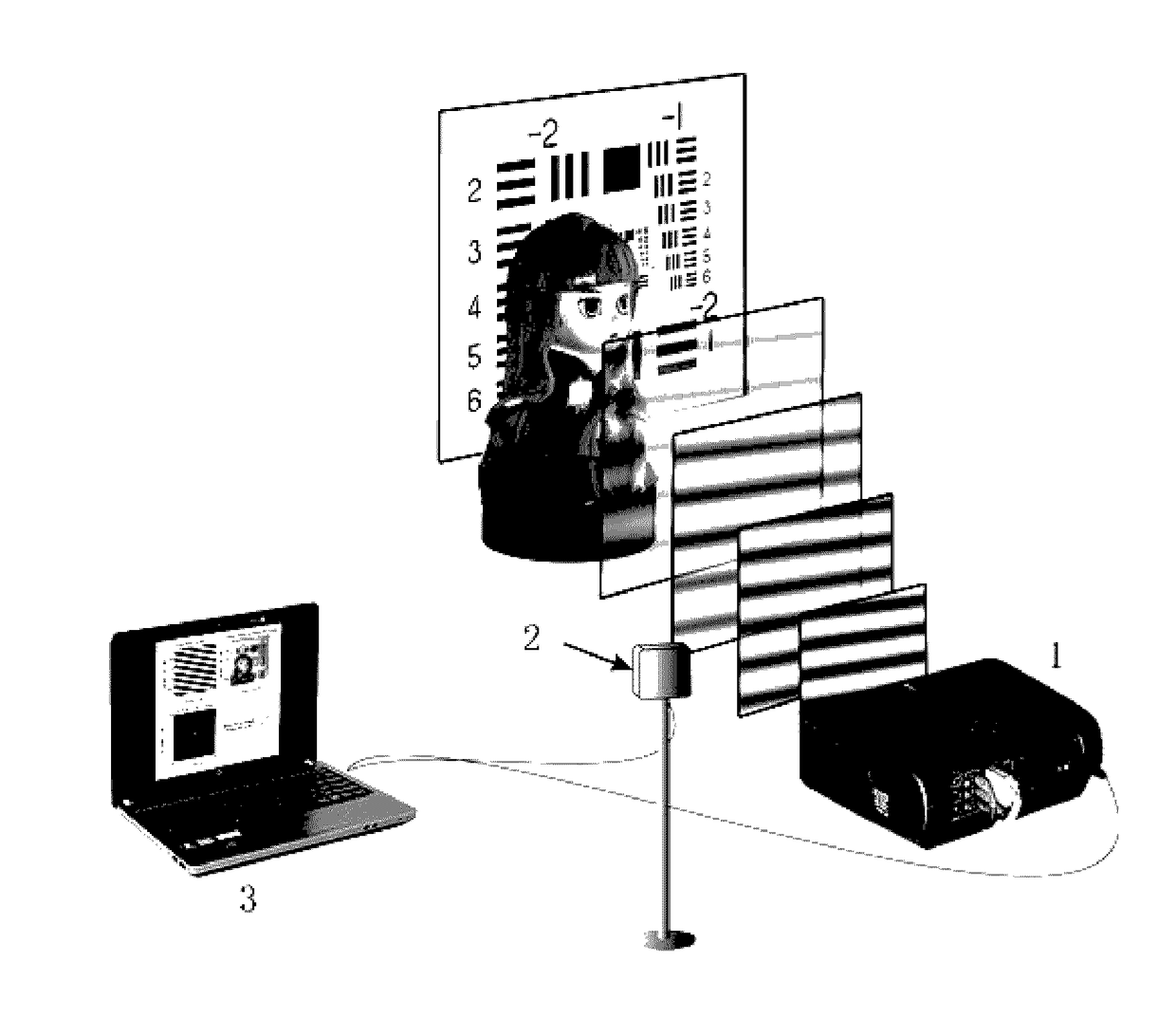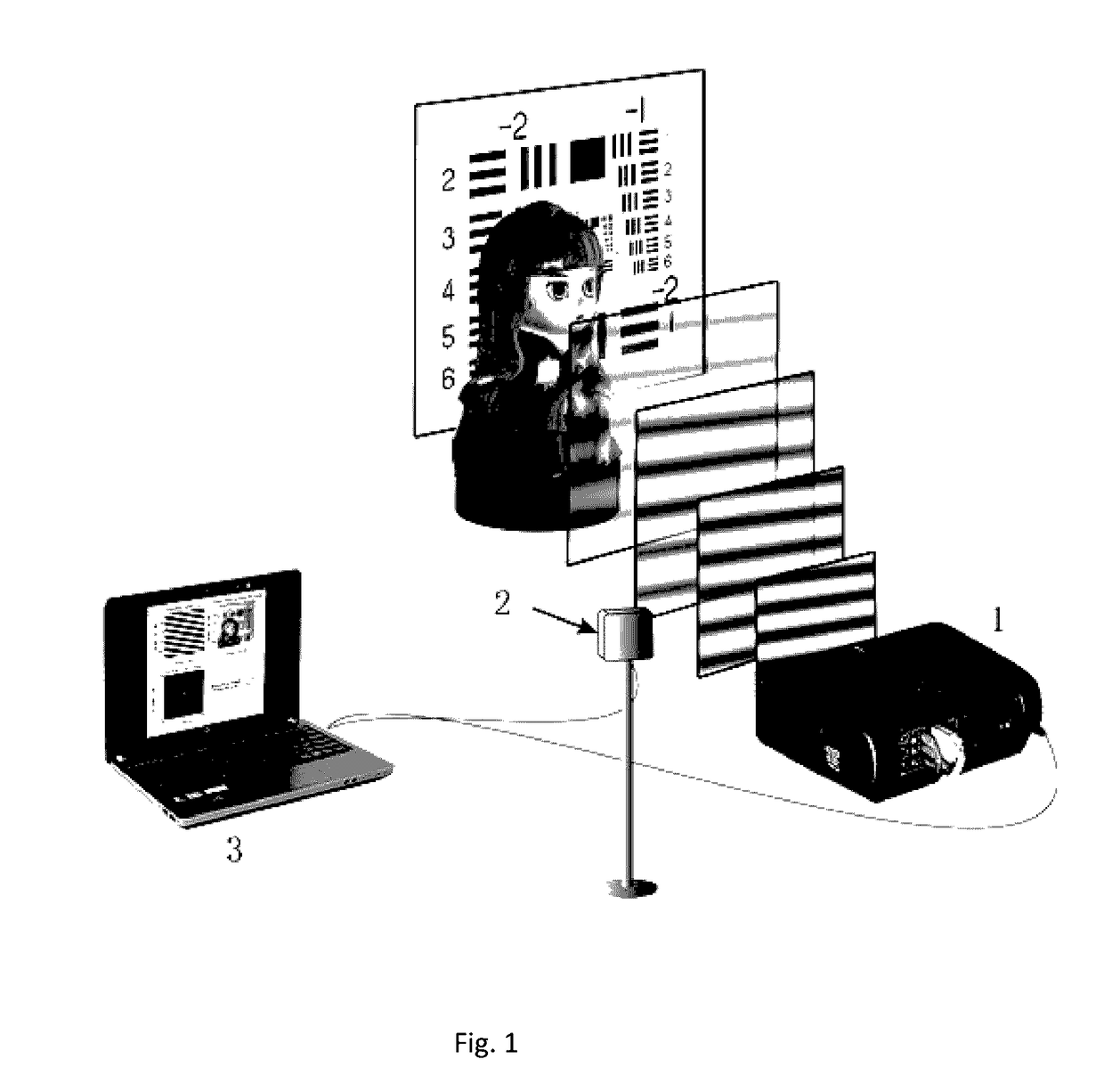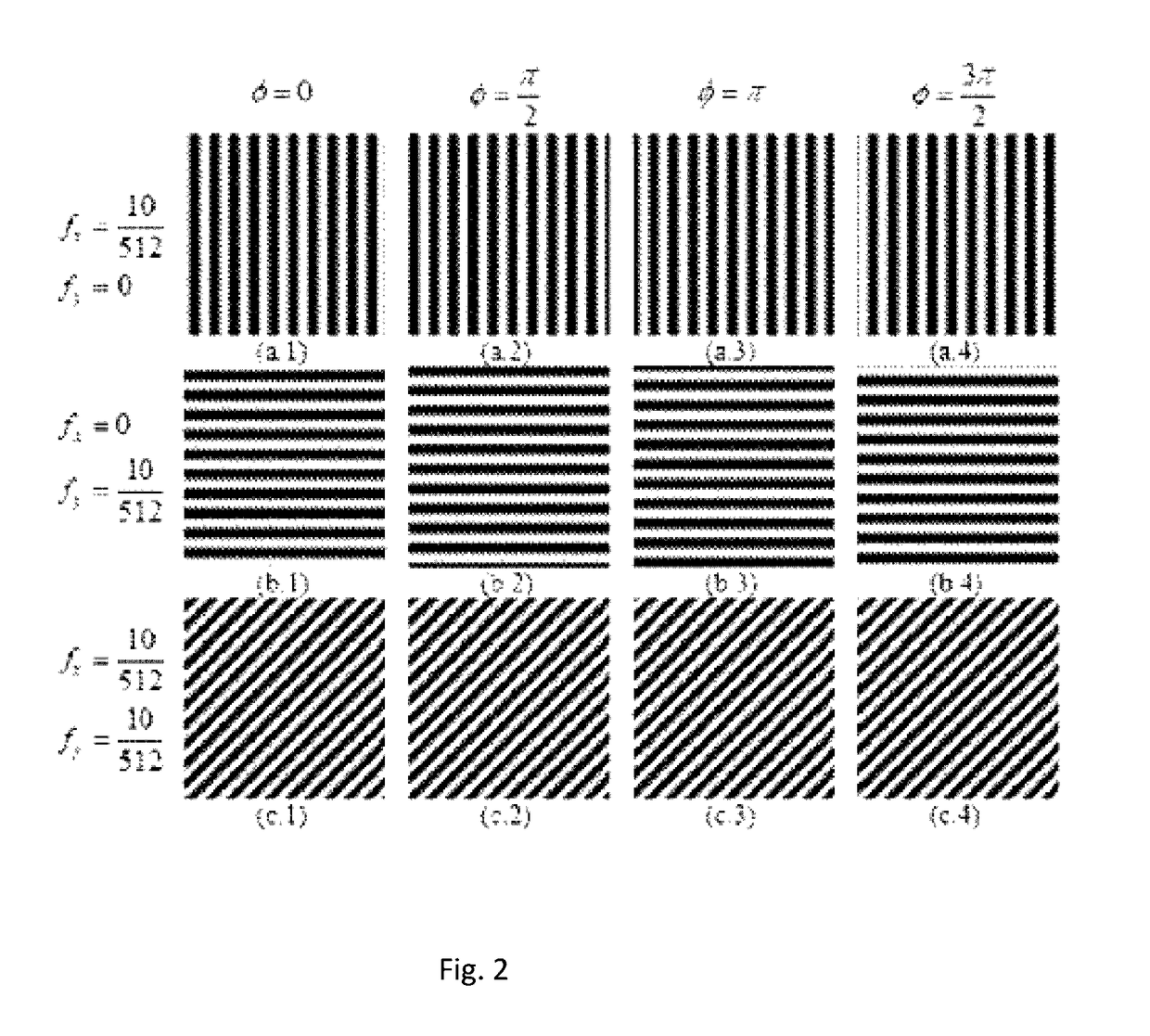Optical imaging method using single pixel detector
a detector and optical imaging technology, applied in the field of optical imaging, can solve the problems of reducing the signal-to-noise ratio, reducing the number of measurements, and the difficulty of spectral characteristics of photosensitive devices for imaging applications beyond visible waveband, so as to achieve high-quality reconstructed images and reduce the number of measurements.
- Summary
- Abstract
- Description
- Claims
- Application Information
AI Technical Summary
Benefits of technology
Problems solved by technology
Method used
Image
Examples
embodiment 1
[0024]The image of the target object under structured light illumination is expressed by using a matrix of M×N pixels. The actual size of the scene consisting of the target object is in the shape of a rectangle whose size is Mδx×Nδy, M and N are positive integers, and δx×δy is a geometrical dimension of one pixel. The Fourier spectrum of the image of the target object is also discretized into a matrix of M×N pixels. The spatial frequencies fx and fy corresponding to each matrix element are respectively normalized to
αMandβN,
where α is an integer number between 0˜M−1, and β is an integer number between 0˜N−1. A digital projector is used as a structured light field generator. The computer controls the digital projector to generate the light fields. Each spatial frequency pair corresponds to four light fields with different initial phases (0, π / 2, π and 3π / 2). The light fields are illuminated onto the target object sequentially.
[0025]A single-pixel detector is used for imaging of a comp...
PUM
 Login to View More
Login to View More Abstract
Description
Claims
Application Information
 Login to View More
Login to View More - R&D
- Intellectual Property
- Life Sciences
- Materials
- Tech Scout
- Unparalleled Data Quality
- Higher Quality Content
- 60% Fewer Hallucinations
Browse by: Latest US Patents, China's latest patents, Technical Efficacy Thesaurus, Application Domain, Technology Topic, Popular Technical Reports.
© 2025 PatSnap. All rights reserved.Legal|Privacy policy|Modern Slavery Act Transparency Statement|Sitemap|About US| Contact US: help@patsnap.com



